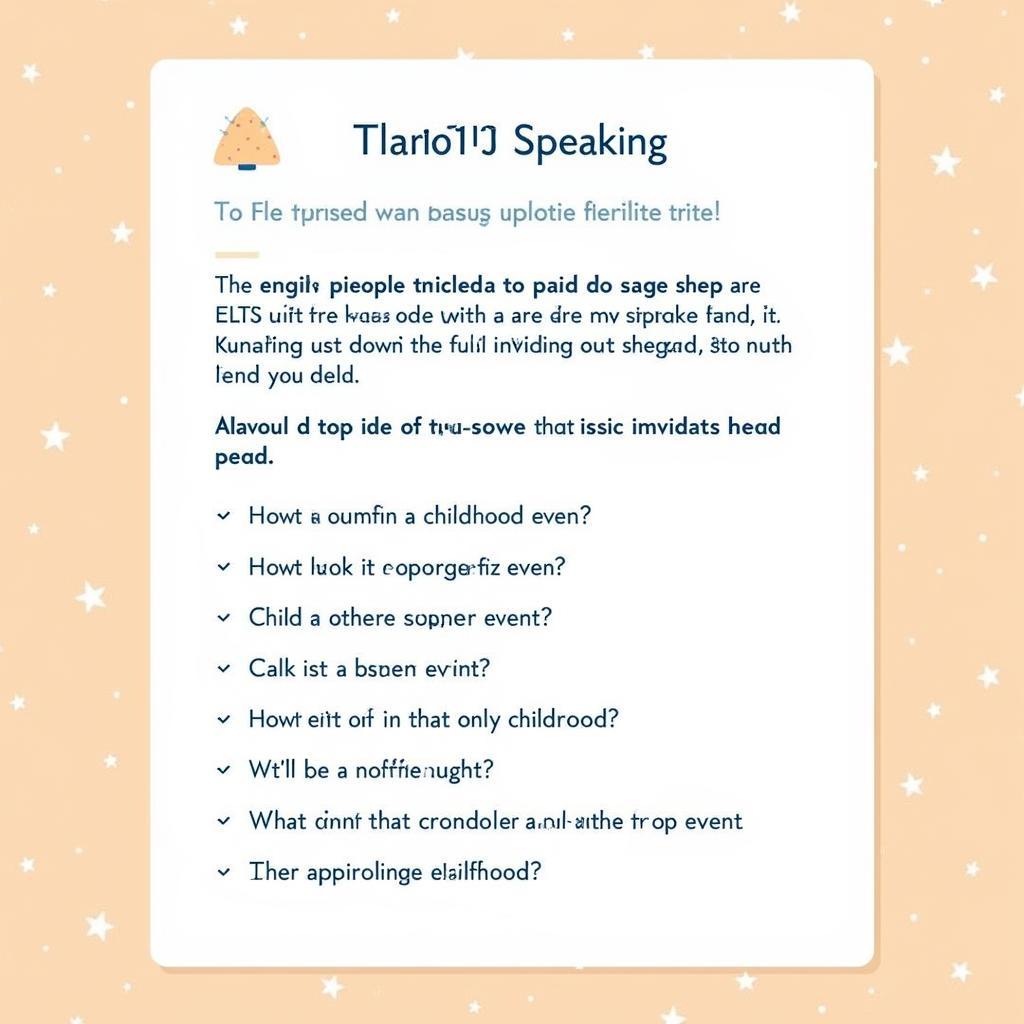Giỏ hàng hiện tại chưa có sản phẩm nào!

Unveiling Childhood Memories for IELTS Speaking Success
Childhood memories are often a treasure trove of stories, emotions, and experiences that shape who we are today. Interestingly, they also play a significant role in the IELTS Speaking test, particularly in Part 2 where you’re asked to describe a personal experience. This task might seem daunting at first, but with the right approach and a trip down memory lane, you can confidently showcase your language skills while sharing a piece of your past.
Why Childhood Memories Matter in IELTS Speaking
The IELTS Speaking test assesses your ability to communicate effectively in English. While grammar and vocabulary are crucial, examiners also look for fluency, coherence, and the ability to express yourself naturally. This is where childhood memories come in handy.
Recalling and describing experiences from your younger years allows you to:
- Speak more fluently: Familiar topics often lead to more natural and fluid speech, reducing hesitation and grammatical errors.
- Show your emotional range: Childhood memories are often filled with emotions, giving you the opportunity to demonstrate a wider range of vocabulary and intonation.
- Connect with the examiner: Sharing personal anecdotes makes you more relatable and creates a more engaging conversation.
Choosing the Right Childhood Memory
Not all childhood memories are created equal when it comes to the IELTS Speaking test. Here are some tips for choosing a winning memory:
- Opt for vivid and detailed memories: Select an experience you can describe in detail, including specific people, places, and emotions.
- Focus on positive or humorous events: While it’s okay to talk about challenging experiences, positive or funny stories tend to be more engaging and showcase a wider range of vocabulary.
- Consider the IELTS scoring criteria: Choose a memory that allows you to demonstrate fluency, coherence, lexical resource (vocabulary), and grammatical range.
Structuring Your Response
Once you’ve chosen your memory, it’s time to structure your response. A clear and organized structure will help you present your ideas logically and ensure you cover all aspects of the cue card. Here’s a simple framework:
- Introduction: Briefly introduce the memory and set the scene. Mention the time period, location, and people involved.
- Main Body: Describe the events of the memory in detail. Use descriptive language, sensory details, and action verbs to bring the story to life.
- Reflection: Explain why this memory is significant to you. How did it make you feel at the time? How has it shaped you as a person?
- Conclusion: Summarize your thoughts and provide a concise ending to your story.
 Sample IELTS Speaking cue card
Sample IELTS Speaking cue card
Practice Makes Perfect
The key to acing the IELTS Speaking test is practice. Here are some ways to practice using childhood memories:
- Record yourself speaking: This will help you identify areas for improvement, such as fluency, pronunciation, and grammar.
- Practice with a study partner: Take turns describing childhood memories to each other and provide constructive feedback.
- Use online resources: There are many websites and apps that offer IELTS Speaking practice tests and sample questions.
By tapping into the power of childhood memories and practicing your speaking skills, you can confidently approach the IELTS Speaking test and achieve your desired results.